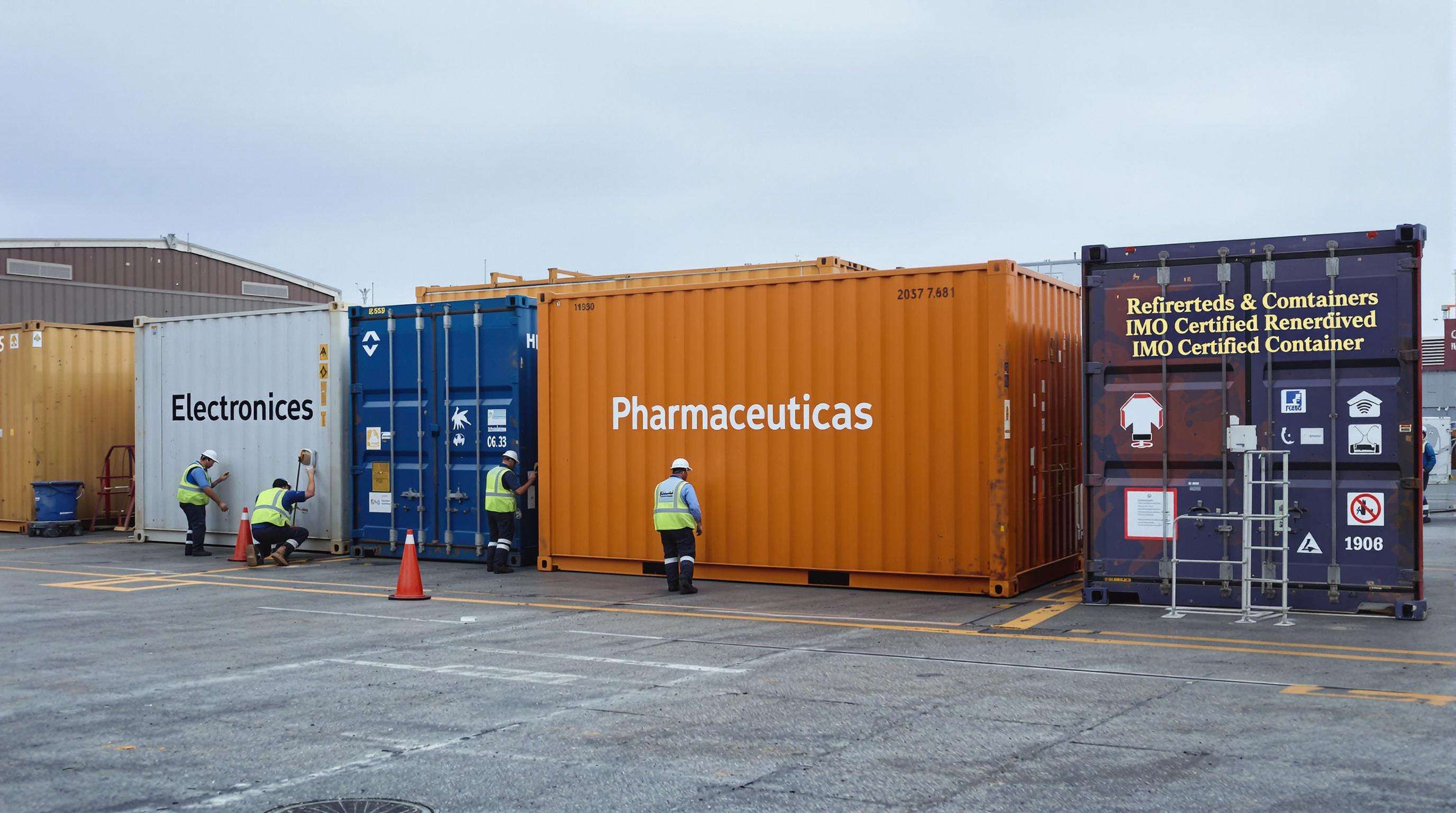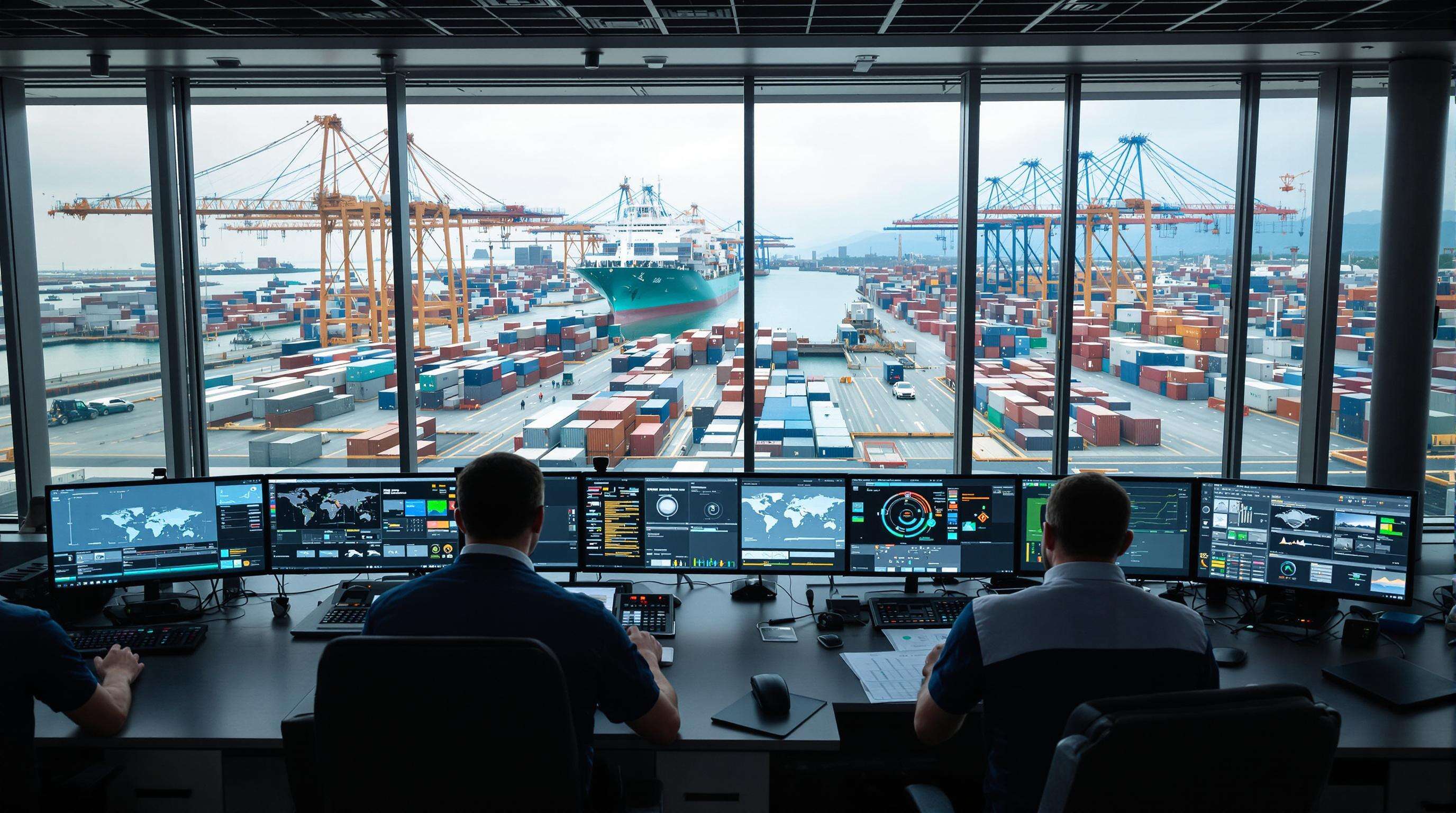Retail and e-commerce sea transport differ significantly in their operational demands. Traditional retail relies on predictable, bulk shipments to centralized warehouses using full container loads (FCL). In contrast, e-commerce logistics require smaller, fragmented consignments (often less-than-container-load, or LCL) distributed across multiple regional hubs. This shift introduces complexities such as:
These distinctions demand real-time container tracking systems and dynamic discharge port allocations to maintain service levels.
The International Air Transport Association (IATA) projects a 30% compound annual growth rate for e-commerce sea freight through 2027, driven by cross-border trade expansion and consumer demand for low-cost international shipping. Key drivers include:
This growth pressures carriers to balance container space allocation between bulk retail shipments and fragmented e-commerce cargo. Port authorities are responding with dedicated e-commerce processing zones equipped with automated sorting systems, reducing average cargo dwell time by 40% (2024 Maritime Infrastructure Report).

Payload specificity dictates that container types and sizes are chosen according to the nature of the product, 87% of logistics decisions are influenced by the nature of the product (Maritime Logistics Report 2024). Most electronics will need dry storage containers to keep moisture away, and perishables such as pharmaceuticals will likely need a refrigerated unit (reefer) in the -25°C to +25°C range. Hazardous cargo accounts for 12% of world seaborne trade, and must be carried in IMO certified containers with reinforced firewalls. Such containers also have a proven track record of reducing spoilage claims: In 2023, a study found that companies using cargo-specific containers reduced spoilage claims by 34% versus generic alternatives.
The 13-CBM threshold remains the critical divide between LCL (Less Than Container Load) and FCL (Full Container Load) strategies:
| Factor | LCL (<13 CBM) | FCL (≥13 CBM) |
|---|---|---|
| Cost Efficiency | Shared space savings | Fixed-rate economies |
| Transit Time | 15-20% longer | Direct port routing |
| Cargo Security | Multiple handlings | Single-container tracking |
Businesses moving 500+ annual containers achieve 19% lower costs through FCL consolidation, while SMEs shipping ≤8 CBM/month favor LCL’s flexibility.
A European apparel retailer cut logistics expenses by $2.8M/year by restructuring its cargo profile:
This strategic alignment between cargo attributes and transport modes reduced per-unit shipping costs from $0.87 to $0.52, demonstrating the value of granular cargo profiling.
On-time delivery ratios are the most important reliability algorithms for sea carriers. According to one leading study, the best carriers achieve an 85% on-time performance for e-commerce shipments, while low-cost options deliver rates as low as 63% (Frontiers in Marine Science Efficiency Study). A 10% increase in delivery consistency results in a $7.80/cubic meter reduction in warehousing costs, using the 2024 logistic financial reports.
Port access of carriers correlates with lead time of cross-border e-commerce. "Forty percent of shippers consider it essential their service providers offer coverage of a minimum of 15 ports in key regions in Asia, Europe and North America," the authors write. Carriers calling less than 8 strategics’ ports face 29% higher cargo consolidation time at the times of bottleneck. But it’s regional specialization that makes a difference – carriers that specialize in 2-3 trade lanes tend to be 18% faster in port turnaround times than generalists.
While low-cost bids appear attractive, 2024 shipping audits reveal 22% of these contracts incurred unexpected surcharges averaging 34% of original quotes. Common hidden costs include:
A recent maritime efficiency analysis found carriers charging 15-20% above market rates delivered 41% fewer operational disruptions, proving costlier upfront bids often provide better lifetime value.
61% of maritime operators now implement blockchain for cargo tracking, up from 38% in 2022. Early adopters report:
This technology proves particularly valuable for temperature-sensitive goods, where real-time monitoring reduces spoilage claims by 67%. However, only 29% of carriers currently offer full API integration with client inventory systems, creating interoperability challenges for smaller e-commerce sellers.
The International Maritime Organization (IMO) 2023 sulfur regulations mandate a 0.5% global sulfur cap for marine fuels, down from 3.5%. This policy has forced operators to adopt:
While cleaner fuels reduced sulfur oxide emissions by 77% in regulated zones, 42% of carriers report route optimization challenges due to uneven global compliance standards. A 2024 industry report found 68% of operators now use blended fuel strategies to balance costs and regulations.
Carbon offset initiatives claim to neutralize shipping emissions through reforestation and renewable energy projects, but peer-reviewed studies reveal systemic flaws:
| Issue | Data Point (2024) | Source |
|---|---|---|
| Delayed emission reductions | 61% of projects | ScienceDirect study |
| Overstated carbon sequestration | 40-70% variance in audits | Maritime decarbonization report |
Critics argue these programs enable "greenwashing" rather than operational changes, with only 12% of verified credits directly funding emission-reduction technologies. The debate intensifies as 33 nations now mandate carbon credit purchases for port access, despite limited evidence of net environmental benefit.

Modern shipping logistics increasingly rely on advanced technologies to address operational challenges. Artificial intelligence (AI) and Internet of Things (IoT) systems now form the backbone of cargo visibility and route optimization strategies, with 73% of logistics leaders prioritizing these tools in their 2024 digital transformation budgets.
Machine learning programs assess historical data on shipping and real-time variables from weather patterns to port activity to make the most efficient plan. A 2024 study on maritime efficiency demonstrated transport AI reduces fuel consumption 18-22%, while maintaining 15% higher on time arrival for major trading routes. Now the leading providers offer dynamic rerouting solutions that automatically reroute based on live AIS data and predictive analytics, saving shippers $2.7 billion in potential delays annually.
According to recent figures, 65% of container ships now use IoT sensors to track their whereabouts and monitor their condition. By offering accurate humidity and temperature controls, the technology has helped lower loss rates for perishable cargo by 19 per cent during the first year of deployment. In cold-chained logistics, IoT containers illustrate a 40% reduction in response time to deviation incidents directly reducing the frequency of insurance claims by 31% (MarineTech 2024).
Global e-commerce brands managing over 10,000 annual shipments report 38% fewer delays when using three or more carriers, according to 2024 logistics data. Multi-carrier strategies mitigate port congestion risks while optimizing cost-to-speed ratios, particularly for businesses serving multiple continents.
A 2023 supply chain resilience study found companies allocating shipments across 2–3 ocean carriers reduced weather-related disruptions by 45%. Effective diversification considers:
Market leaders now blend mainstream carriers (handling 60–70% of volume) with specialized providers offering:
A consumer electronics manufacturer achieved 25% annual cost savings through a hybrid model using mega-carriers for trans-Pacific routes and regional specialists for last-mile maritime distribution in Southeast Asia.
Leading third-party logistics partners now offer:
57% of enterprises using multi-carrier management platforms report improved environmental compliance scores through optimized container utilization, per a 2024 maritime sustainability report.
1. What are the key differences between retail and e-commerce shipping?
Retail shipping typically involves predictable, bulk shipments to centralized locations, mainly using full container loads. E-commerce shipping, however, requires smaller, fragmented shipments (often less-than-container-load) to multiple regional hubs, with greater demand for speed and flexibility.
2. How significant is e-commerce sea cargo growth projected for the coming years?
The IATA predicts a 30% compound annual growth rate in e-commerce sea freight through 2027, mainly driven by cross-border trade and consumer demand for cost-effective international shipping.
3. Why is carrier reliability important in sea transport?
Carrier reliability metrics, such as on-time performance, are essential in reducing warehousing costs and ensuring product availability. A higher delivery consistency can significantly lower storage-related expenses.
4. How do sulfur regulations impact sea transport?
The IMO's 2023 sulfur caps have led to the adoption of lower-sulfur fuels, scrubbers, and alternative propulsion systems, which impact operational costs and require strategic adjustments.
5. What role does technology play in modern shipping logistics?
Technologies like AI and IoT play crucial roles in cargo visibility, route optimization, and reducing operational disruptions, forming the backbone of modern shipping strategies.
 Hot News
Hot News2024-11-15
2024-11-11
2024-11-06
2024-10-31
2024-10-28
2024-10-25